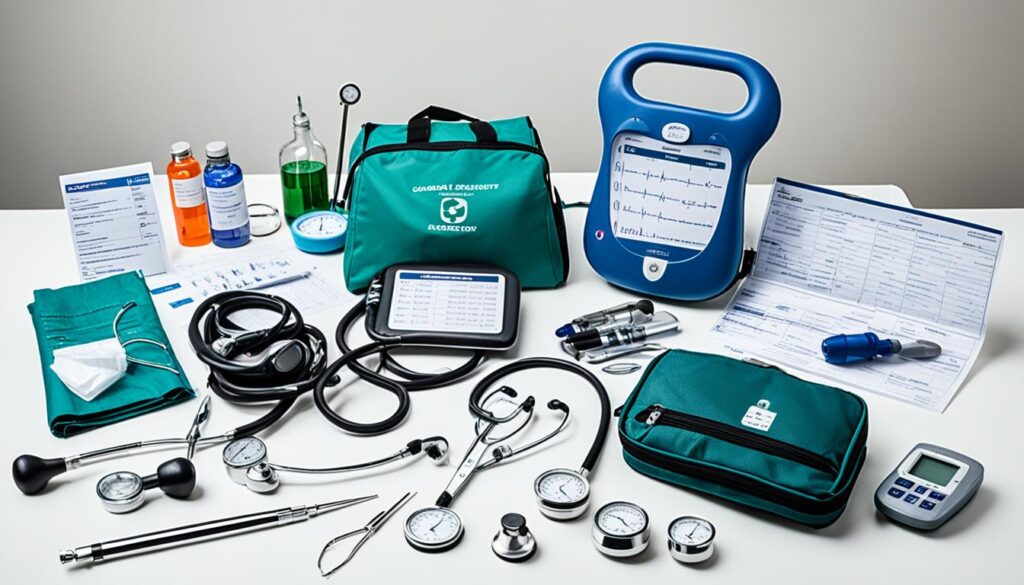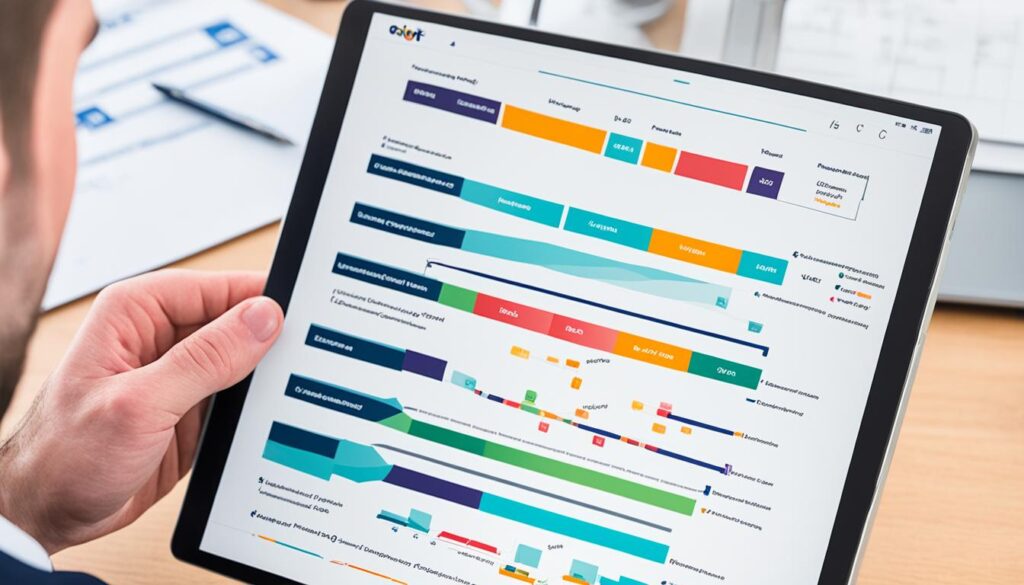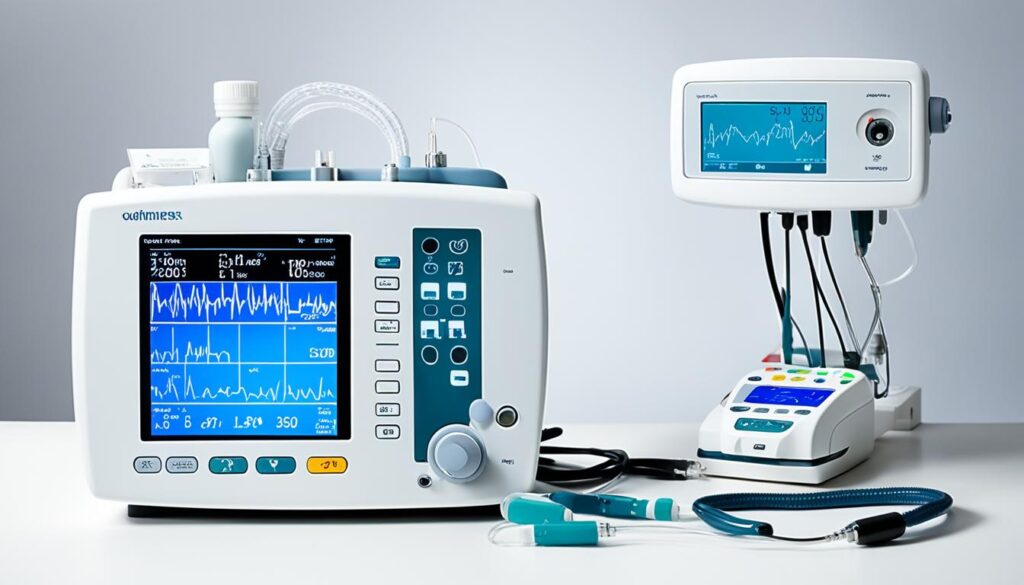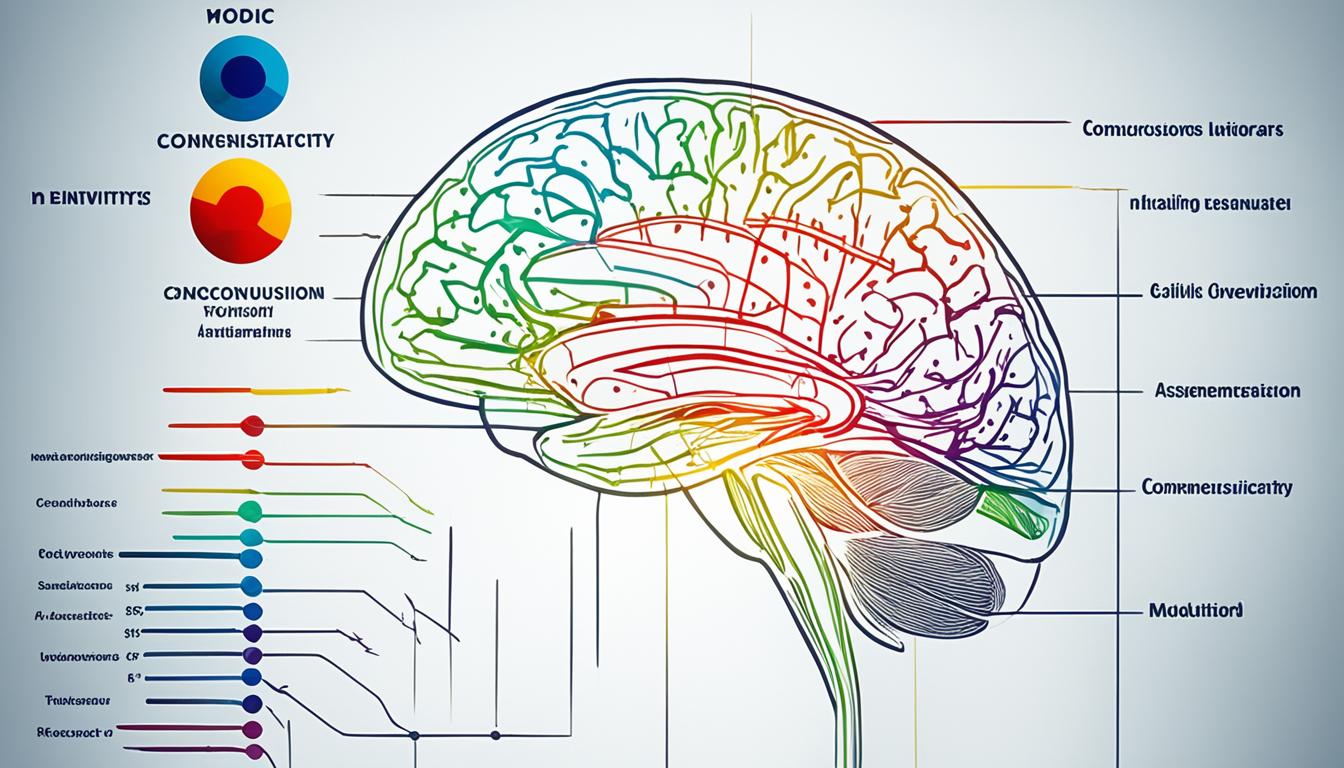Every year, 3.8 million concussions from sports and activities are reported in the US. This highlights the need to watch for concussion vital signs closely. Because with brain injuries, there’s no time to waste. Quick action and proper handling are crucial for the best recovery.
Knowing the signs of a concussion is key to protect your health. As you learn about concussion management, spotting those signs early helps recovery. We’ll look into important concussion signs. This knowledge prepares you to fight this silent enemy with action and understanding.
Key Takeaways
- Understanding concussion signs helps spot brain injuries fast, aiding effective recovery strategies.
- Quick action in concussion cases reduces the risk of long-lasting mental and physical harm.
- Watching for concussion symptoms and getting timely medical help ensures top care and results.
- Knowing the latest research on concussion indicators boosts athlete safety.
- Using special tools and platforms for tracking concussion signs leads to better assessment and treatment.
Understanding Concussion and Its Impact on Neurocognition
In sports, safety comes first. Knowing how concussions affect your brain is very important. A concussion is not just a simple bump on the head. It’s a serious event that can harm your thinking and memory. Finding and treating concussions early is key to keeping your brain healthy.
What is a Concussion?
A concussion is a kind of brain injury that happens during sports or playing. It happens when a hard hit to the head or body makes the brain shake inside the skull. This can mess up how the brain works. Some effects are small, but others are big. Learning about concussions is the first step to protect your thinking and memory.
The Cognitive Effects of Concussions
Concussions affect people in different ways. You might have trouble remembering things or paying attention. You could also think and respond slower than usual. Feeling forgetful or like your thoughts are stuck in fog are signs of a concussion. These effects are hidden but very serious.
| Cognitive Function | Effect of Concussion | Potential Long-term Impact |
|---|---|---|
| Memory | Difficulty retaining new information | Struggles with daily tasks and learning |
| Attention | Decreased concentration and focus | Challenges in work and academic environments |
| Processing Speed | Slower thought and reaction times | Delayed responsiveness in various situations |
Importance of Early Identification and Management
Ignoring a concussion can be very dangerous. Spotting and treating it early is crucial. This helps prevent more harm and supports recovery. Acting fast and following the right steps keeps your brain in good shape. Keeping your brain working well is important for a good life.
Remember, recognizing the signs of concussion and taking immediate action can prevent further injury and expedite healing. Your brain is your most vital asset—handle it with care.
Concussion Vital Signs Assessment: A Valuable Tool
Understanding concussion management is key, and the right tools are critical. Concussion vital signs assessment is an essential tool. It allows a detailed look at the effects of common sports injuries. It focuses on baseline testing, post-injury assessment, and interpreting test results. Each part plays a crucial role in managing concussions.
The Role of Baseline Testing in Concussion Management
Baseline testing is the foundation of good concussion management. It happens before any injury to know a person’s normal brain function. This pre-injury data is a crucial reference for post-injury assessments. It ensures comparisons are accurate and specific.
It looks at several brain functions, like reaction time, memory, and attention. This helps healthcare pros create personalized management plans for each person.
Diving into Post-Injury Assessment
After an injury, post-injury assessment is the critical next step. It compares pre- and post-injury test results. This shows the injury’s impact and recovery path. This step looks closely at vital signs of a concussion to grasp the current and changing health state.
It measures more than just brain function; clinical aspects like balance are also checked. This full view aids in making safe decisions about returning to activities.
Interpreting Test Results and Valid Scores
Understanding the test results is as crucial as doing the tests right. The results need to be clear. This includes individual scores and how they rank. This clarity helps in making smart choices. A big focus is on ensuring the scores are reliable. They are vital for planning recovery.
If an athlete’s results seem off, retesting might be needed. This ensures the data’s reliability. Then, a solid recovery plan can be made.

The table below compares baseline and post-injury scores. It shows how these metrics are key in managing concussions effectively:
| Cognitive Function | Baseline Score | Post-Injury Score | Percent Change |
|---|---|---|---|
| Reaction Time | 250 ms | 300 ms | +20% |
| Memory Recall | 95% | 80% | -15% |
| Attention Span | 100% | 85% | -15% |
| Balance Score | 30 errors | 50 errors | +66.7% |
Through detailed concussion vital signs assessment and careful analysis, healthcare pros can better manage concussions. This improves athlete health and safety.
Key Components of the Concussion Vital Signs Platform
The Concussion Vital Signs platform plays a big role in managing sports-related concussions. Its key components help with detailed assessments and tracking of symptoms. The platform is designed to be both accurate and easy to use for tracking and managing concussions.

One important feature is baseline testing. It helps compare an athlete’s brain function before and after an injury. This part is key to knowing how an athlete’s brain works before getting hurt. The platform also has a detailed post-injury assessment part. This is crucial for checking how the patient does after a concussion, compared to their baseline.
- Concussion Symptom Scales: Tools to measure and note many symptoms, showing how severe a concussion is and how it changes.
- Self-Reported Concussion History: This feature records a person’s past concussions, adding important information to current tests.
Knowing the different user types on the platform is key. There’s a clear split between administrator users and athlete-testing users. This setup makes managing tests easy. Administrators set up and handle tests, while athletes can simply do their tests.
The concussion vital signs platform brings together these important parts. It forms a system that supports early concussion management and helps keep athletes safe and healthy.
It’s important to grasp the platform’s details fully. Doing so lets users make the most of it. This ensures everyone gets top-notch care. It helps guide them safely back to their activities.
Implementing Concussion Protocols and Vital Signs Testing
The well-being of athletes depends on tight concussion protocols and checking vital signs carefully. It’s key to have a plan for quick and correct concussion checks. We’ll explore how to prepare, lower risks, and work together with healthcare and sports teams.
Preparation for Administering the Concussion Vital Signs Test
Getting ready is essential for the Concussion Vital Signs test. This groundwork is critical for effective concussion care. Making a distraction-free area is vital. This means getting the athlete ready, explaining the test beforehand, and setting up the right equipment for precise testing.
Mitigating Risks: Ensuring Accurate Test Administration
To lower testing risks, we must focus on doing the test right. Paying close attention to details is key for accuracy. It’s also important to avoid any distractions that could mess up the test results.

Coordination Among Healthcare Providers and Athletic Personnel
Good teamwork between health pros and sports staff is crucial. This teamwork ensures concussion care and vital sign checks are done right. By sharing information and communicating well, everyone can help keep athletes safe and manage concussions better.
Conclusion
We are almost at the end of our journey, looking at how crucial it is to watch concussion vital signs. These signs, and tools like the Concussion Vital Signs platform, are key in fighting the long-lasting effects of concussions. This platform helps a lot in assessing concussions and leads to better care decisions.
For those in healthcare or sports, paying close attention to these signs can make a big difference in someone’s recovery. Dealing with brain injuries needs a lot of accuracy and understanding. The Concussion Vital Signs platform was made to help you make smart choices right after a concussion and as the person gets better.
Highlighting the need for quick action and care is super important. It’s a way to protect the health and future of those you look after. As we finish our talk, see this as a call to action. It’s about putting the health of people first by keeping an eye on concussion signs, creating a safer place for everyone.




